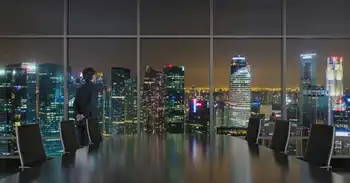Solar could provide 10% of generation by 2025 - study
By Business Wire
Electrical Testing & Commissioning of Power Systems
Our customized live online or in‑person group training can be delivered to your staff at your location.

- Live Online
- 12 hours Instructor-led
- Group Training Available
The Utility Solar Assessment (USA) Study, produced by clean-tech research and publishing firm Clean Edge and green-economy nonprofit Co-op America, provides a comprehensive roadmap for utilities, solar companies, and regulators to reach 10% solar in the U.S. by 2025.
The study finds that significantly scaling solar power in the U.S. will require the active involvement of utilities. The study delivers a to-do list for the three key stakeholders in the nationÂ’s solar industry. Among others, the action items include:
• For utilities: Take advantage of the unique value of solar for peak generation and alleviating grid congestion; implement solar as part of the build-out of the smart grid; and adapt to new market realities with new business models.
• For solar companies: Bring installed solar systems costs to $3 per peak watt or less by 2018; streamline installations; and make solar a truly plug-and-play technology.
• For regulators and policy makers: Pass a long-term extension of investment and production tax credits for solar and other renewables; establish open standards for solar interconnection; and give utilities the ability to “rate-base” solar.
The USA Study also reports that:
• For the first time solar power is beginning to reach cost parity with conventional energy sources. As solar prices decline and the capital and fuel costs for coal, natural gas, and nuclear plants rise, the U.S. will reach a crossover point by around 2015.
• Installed solar PV prices are projected to decline from an average $5.50-$7.00 peak watt (15-32 cents kWh) today to $3.02-$3.82 peak watt (8-18 cents kWh) in 2015 to $1.43-$1.82 peak watt (4-8 cents kWh) by 2025.
• Solar power offers a number of advantages over conventional energy sources. Among them, the ability to deliver energy at or near the point of use, zero fuel costs, minimal maintenance requirements and zero carbon-based source emissions.
• The investment to arrive at 10% solar in the U.S. is not small, reaching $450 billion to $560 billion between now and 2025, an average of $26 billion to $33 billion per year. However, given utilities’ existing capital costs such an investment is not prohibitive. To put the investment in perspective: Utilities spent an estimated $70 billion on new power plants and transmission and distribution systems in 2007 alone.
“One of the big takeaways from this report is that, in many ways, the future of solar is in the hands of utilities,” said Ron Pernick, Clean Edge cofounder and managing director and USA Study coauthor. “Reaching 10 percent of our electricity from solar sources by 2025 will require the active participation of utilities along with the support and participation of regulators and solar technology companies.”
In just the past year, a number of utilities and solar companies have announced aggressive programs to deploy large-scale solar power projects, including Southern California EdisonÂ’s plan to install 250 megawatts of distributed solar PV, Duke EnergyÂ’s stated goal of investing $100 million in rooftop solar, and Pacific Gas & ElectricÂ’s announcements to invest in thousands of megawatts of concentrating solar power in CaliforniaÂ’s deserts.
While these players are still in the vanguard, a number of other utilities are looking to join them to help bring solar power to scale – and the study shows that solar could become “ubiquitous” as with earlier semiconductor-based revolutions.
“As capital and fuel costs have doubled or tripled for coal, natural gas, and nuclear power over the past few years, solar power costs are coming down,” explains Alisa Gravitz, Co-op America executive director and USA Study project director. “For the first time in history, cost-competitive solar power is now within the planning horizon of every utility in the nation.”
The study, written by Pernick and Clean Edge contributing editor Clint Wilder, is based on interviews with more than 30 solar, utility, financial, and policy experts and leverages proprietary Clean Edge data on solar PV market size, cost and pricing history and projections, and other key market factors.











